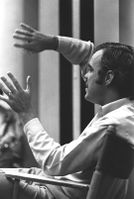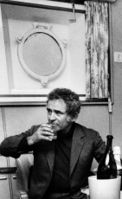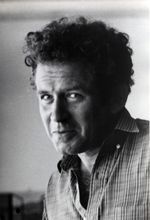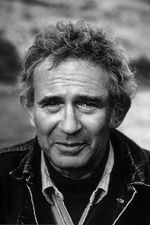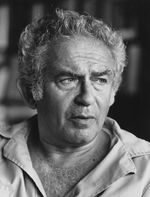1972: Difference between revisions
Created page. |
m Updated gallery and links. |
||
| (One intermediate revision by the same user not shown) | |||
| Line 1: | Line 1: | ||
{{WDside}} | {{WDside}} | ||
{{NM}} begins work on what for the next several years will be called “the Egyptian novel,” later published as ''Ancient Evenings'' ([[83.18]]). | |||
In debt and in arrears to the I.R.S, he speaks at more than 20 colleges to earn money over the year. | In debt and in arrears to the I.R.S, he speaks at more than 20 colleges to earn money over the year. | ||
His fourth miscellany, ''Existential Errands'' ([[ | His fourth miscellany, ''Existential Errands'' ([[72.7]]), which contains his essays on film and theatre, and his negative review of Norman Podhoretz’s 1967 memoir, ''Making It'', is published on 17 April. | ||
In the summer, he covers the national political conventions, and publishes his account of them, ''St. George and the Godfather'' ([[72.17]]), in late October (with advance excerpts in ''Life'' and ''New York Review of Books''). | In the summer, he covers the national political conventions, and publishes his account of them, ''St. George and the Godfather'' ([[72.17]]), in late October (with advance excerpts in ''Life'' and ''New York Review of Books''). | ||
In September, he and | In September, he and Carol Stevens move to Stockbridge, MA, where he purchases a house. | ||
On 12 October his father dies. In November, he begins working on a biography of Marilyn Monroe, shortly after meeting with his most important collaborator, [[Lawrence Schiller]], who conceives of the book and supplies the many photos that accompany | On 12 October his father dies. In November, he begins working on a biography of [[w:Marilyn Monroe|Marilyn Monroe]], shortly after meeting with his most important collaborator, [[Lawrence Schiller]], who conceives of the book and supplies the many photos that accompany Mailer’s words. | ||
Later that month in Illinois he meets [[J. Michael Lennon]], who will become his editor, archivist and authorized biographer. | Later that month in Illinois he meets [[J. Michael Lennon]], who will become his editor, archivist and authorized biographer. | ||
{{Gallery | |||
File:Lennon01-1973.JPG|Mike Lennon in 1973. | |width=200 | ||
</ | |height=200 | ||
|align=left | |||
|File:Lennon01-1973.JPG|Mike Lennon in 1973. | |||
|File:1972 Statendam.jpg|NM sips champagne prior to departure of the S.S. Statendam from New York, Dec. 4, 1972. (AP Photo/Ron Frehm) | |||
}} | |||
<div style="clear:both;"></div> | |||
{{1960s|state=collapsed}} | {{1960s|state=collapsed}} | ||
Latest revision as of 09:50, 2 June 2019
Mailer begins work on what for the next several years will be called “the Egyptian novel,” later published as Ancient Evenings (83.18).
In debt and in arrears to the I.R.S, he speaks at more than 20 colleges to earn money over the year.
His fourth miscellany, Existential Errands (72.7), which contains his essays on film and theatre, and his negative review of Norman Podhoretz’s 1967 memoir, Making It, is published on 17 April.
In the summer, he covers the national political conventions, and publishes his account of them, St. George and the Godfather (72.17), in late October (with advance excerpts in Life and New York Review of Books).
In September, he and Carol Stevens move to Stockbridge, MA, where he purchases a house.
On 12 October his father dies. In November, he begins working on a biography of Marilyn Monroe, shortly after meeting with his most important collaborator, Lawrence Schiller, who conceives of the book and supplies the many photos that accompany Mailer’s words.
Later that month in Illinois he meets J. Michael Lennon, who will become his editor, archivist and authorized biographer.

